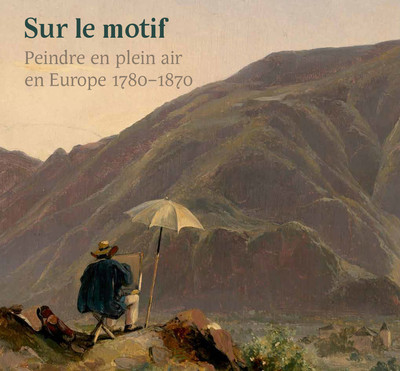- EAN13
- 9781911300830
- Éditeur
- Paul Holberton Publishing
- Date de publication
- 22 octobre 2020
- Nombre de pages
- 256
- Dimensions
- 24,6 x 26,4 x 2,6 cm
- Poids
- 1462 g
- Langue
- fre
Sur Le Motif, Peindre En Plein Air En Europe 1780-1870
Ger Luijten, Mary Morton, Jane Munro
Paul Holberton Publishing
Prix public : 50,00 €
This lavish catalogue presents sketches made en plein air between the end of the eighteenth century and late nineteenth century. It accompanies a major exhibition at the National Gallery of Art, Washington (USA), the Fondation Custodia (France) and the Fitzwilliam Museum, Cambridge (UK). In the eighteenth century the tradition of open-air painting was based in Italy, Rome in particular. Artists came from all over Europe to study classical sculpture and architecture, as well as masterpieces of Renaissance and Baroque art. During their studies, groups of young painters visited the Italian countryside, training their eyes and their hands to transcribe the effects of light on a range of natural features. The practice became an essential aspect of art education, and spread throughout Europe in the nineteenth century. This exhibition focuses on the artists’ wish to convey the immediacy of nature observed at first hand. Around a hundred works, most of them unfamiliar to the general public, will be displayed. The artists represented include Thomas Jones, John Constable, J.M.W. Turner, Pierre-Henri de Valenciennes, Achille-Etna Michallon, Camille Corot, Christoffer Wilhelm Eckersberg, Johan Thomas Lundbye, Vilhelm Kyhn, Carl Blechen, Johann Martin von Rohden, Johann Wilhelm Schirmer, Johann Jakob Frey, among others. The sketches demonstrate the skill and ingenuity with which each artist quickly translated these first-hand observations of atmospheric and topographical effects while the impression was still fresh. The exhibition and the catalogue will be organized thematically, reviewing, as contemporary artists did, motifs as trees, rocks, water, volcanoes, and sky effects, and favourite topgraphical locations, such as Rome and Capri. The catalogue will present numerous unpublished plein air sketches, and contains much original scholarship on this relatively young field of art history.


















